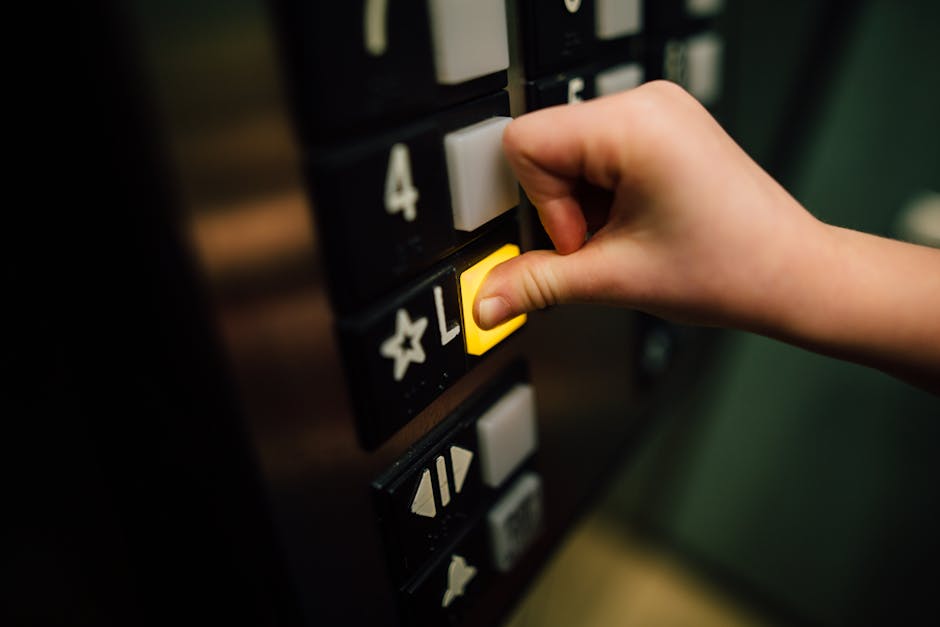Energy efficiency is a driving force behind modern building development, especially in high-density urban markets like New York City. Elevators play a significant role in the energy footprint and operational cost of every commercial or residential tower. At Kaiser Elevator, we have seen first-hand how regenerative drive technology transforms these realities for developers, helping streamline project costs, improve sustainability, and create long-term value for building owners and operators.

Understanding Regenerative Elevator Drives
Traditional elevator systems waste a considerable amount of energy, particularly during braking or when the elevator descends with a full load. This wasted energy typically dissipates as heat, straining both electrical consumption and internal climate control systems. Regenerative elevator drives address this by capturing energy that would otherwise be lost and converting it into usable power for the building’s grid.
- When an elevator moves down with passengers or up with minimal load, its counterweight generates excess potential energy.
- Instead of releasing this energy as heat, regenerative drives recover it and direct it towards powering lighting, HVAC, or even other elevators in the building.
- This not only brings down elevator energy consumption, but also reduces cooling loads by minimizing heat released into the machine room.
At Kaiser Elevator, we integrate these regenerative drives into our new installation packages and modernization solutions for both commercial and residential properties, ensuring clients access genuine, measurable improvements in operational efficiency.
How Regenerative Drives Lower Energy and Operating Costs
Adopting regenerative drive technology can yield both direct and indirect savings for developers and property managers. Here’s how:
- Direct Electricity Savings: Regenerative drive elevators cut energy usage significantly, which can result in thousands of dollars in savings per year for each unit in a mid- or high-rise building, depending on size and usage patterns.
- HVAC Relief: By reducing heat output, elevator machine rooms remain cooler, helping to lower building-wide HVAC consumption and related costs.
- Peak Demand Reduction: Capturing and reusing elevator-generated energy reduces utility peak demand, potentially lowering demand charges from local utilities—an important consideration in densely populated markets.
- Extended Equipment Lifespan: Because elevators experience less wear on key braking components, maintenance cycles can be extended, and major component replacements are needed less frequently.
In our projects across New York and the US, we’ve observed these savings drive shorter payback periods and greater lifecycle value, especially in mixed-use and commercial properties with high traffic volumes.
Sustainability Benefits for Urban Developers
Integrating energy efficient elevators strongly supports sustainability goals and building certification programs:
- Carbon Footprint Reduction: Lower electricity use means less carbon emissions, contributing directly to LEED and local green building standards compliance.
- Asset Value Enhancement: Sustainable solutions are increasingly demanded by tenants, investors, and city planners, making properties more resilient against obsolescence and more attractive in the marketplace.
- Long-Term Compliance: With New York’s Local Law requirements and shifting national codes, future-proof upgrades, like regenerative drives, provide an extra layer of compliance security for stakeholders.

Where and When Do Regenerative Drives Make Sense?
Retrofitting elevators with regenerative drives is especially practical in the following scenarios:
- Medium- and high-rise buildings with traction elevators and high passenger volume
- Properties facing strict energy benchmarks or participating in green certifications
- Urban developments chasing lower lifecycle costs and optimized asset value
- Modernization projects where mechanical and control upgrades are already planned
Hydraulic elevator systems, by their nature, have less recoverable energy compared to traction systems, so the largest gains will be observed in traction-equipped high-use buildings. If you are evaluating which system best fits your project, see our detailed comparison in How to Select the Right Traction vs. Hydraulic Elevator System for High-Rise and Mixed-Use Buildings.
Upgrade Process: How We Approach Energy Efficiency at Kaiser Elevator
Every building is unique, which is why our process always begins with an in-depth assessment. Here is our holistic approach when designing or upgrading with regenerative technology:
-
System Audit and Usage Review
We evaluate your existing elevator assets, traffic patterns, and overall system health. Key considerations include elevator type (traction/hydraulic), trip volume, and the age of drive and control equipment. -
Custom Energy & ROI Analysis
Our team models energy use data, simulates usage patterns, and builds a tailored savings and payback estimate. We calculate direct energy savings, potential HVAC cost reductions, and lifecycle value projections. -
Project Planning & Incentive Alignment
We guide you through available utility incentives (such as NYSERDA and Con Edison for New York developments) and compliance programs, helping maximize ROI for modernization projects. -
Professional Installation
Our precision-engineered elevator packages are installed by factory-trained, code-compliant professionals who are familiar with the unique demands of dense, urban project sites. -
Ongoing Maintenance & Verification
Post-installation, we offer tailored maintenance plans to ensure sustained efficiency, longevity, and optimal performance. reliability, and compliance are always priorities.
Transparency and long-term value drive every recommendation. For an understanding of how planned maintenance reduces unplanned costs and extends upgrades’ impact, see our article: Elevator Maintenance Contracts: What Every Building Owner Should Know to Minimize Downtime and Cost.
Kaiser Elevator: Solutions Built for Developers and Contractors
We focus on providing not just the hardware and technology, but a streamlined process that takes a development from design and engineering through to supply, installation, commissioning, and lifecycle service. Our offerings for energy-efficient and regenerative drive elevators feature:
- Gearless traction systems for smooth, quiet operation and greater electric efficiency
- Advanced control technology, including destination dispatching and digital monitoring
- LED lighting and energy management options tailored to property type and client need
- Customizable cabin materials (such as stainless steel, glass, and stone) to meet architectural and brand requirements
- Packages engineered for code compliance and ADA accessibility
- Project management with full transparency—from needs assessment to certification and support
All installations are designed to comply with US and international safety standards, and include robust warranties and ongoing support, so properties stay competitive and code-compliant for decades.

Frequently Asked Questions: Regenerative Drives in Elevator Systems
- How much can developers expect to save with regenerative drives?
Actual savings depend on usage, traffic, and building type. High-rise, high-traffic buildings see the most dramatic reductions, with substantial annual kWh savings and rapid ROI—often in just a few years. - Do regenerative drives impact elevator comfort or ride quality?
Modern regenerative technology is designed for seamless operation, maintaining or even improving ride quality and operational reliability. - Can I retrofit existing elevators or is this just for new builds?
Many traction elevators can be retrofitted as part of a modernization package. We always recommend a professional assessment to determine the most cost-effective upgrade path for your asset.
Action Steps for Real Estate Developers and Asset Managers
To help you evaluate whether regenerative drive elevators are right for your property, here is how we recommend moving forward:
-
Contact a Professional for a System Evaluation
An expert assessment can uncover unique savings opportunities and clarify upgrade feasibility. -
Request an Energy Analysis and ROI Projection
Understand your potential savings before you invest. -
Explore Incentive Programs in Your Area
Utility programs may cover part of the upgrade costs for qualifying projects. -
Plan for Code Compliance and Smart Integration
A thoughtful modernization or installation can help properties meet both today’s and tomorrow’s codes and tenant demands.
Looking Forward: The Future of Sustainable Vertical Transportation
With the rising importance of sustainability, cost control, and smarter property performance, regenerative drive elevators represent a simple but powerful step forward. As urban density increases, future-oriented investments in elevator efficiency offer a stronger competitive edge and a better experience for all building occupants.
For more insights on how value-engineered modernization and maintenance strategies can be combined for maximum impact, see our guide on Elevator Modernization vs. Full Replacement: How to Choose the Right Solution for Aging Buildings in the US.
Connect With Us to Start Your Energy Efficiency Journey
If you’re ready to explore how regenerative drive technology can reduce costs and enhance sustainability for your next development or upgrade, reach out to us at Kaiser Elevator. Our specialists deliver practical answers, in-depth ROI analysis, and end-to-end support for every stage of your vertical transportation project.
Together, let’s engineer smarter, greener, and more profitable buildings.

